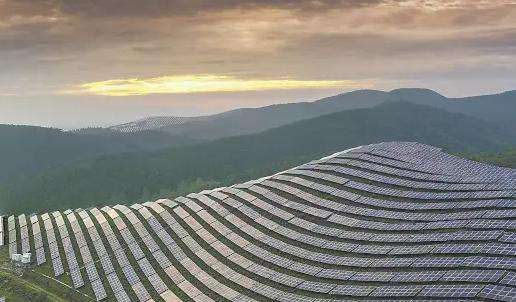Hydroelectric power plants rely on the impact of water to impact the turbine blades to operate the turbine and generate mechanical energy. The hydraulic turbine drives the generator, which spins and converts magnetic energy into electrical energy. Thermal power plants burn coal and use the thermal energy from burning coal to boil water to produce water vapor. The water vapor powers a steam turbine which drives a generator which converts magnetic energy into electrical energy. Nuclear power plants also use thermal energy generated by nuclear reactions to produce water vapor. The water vapor powers a steam turbine which turns a generator, which converts magnetic energy into electrical energy. The electricity generated by the alternator is alternating current (the DC generator generates direct current). Aftera voltage transformation (step-up), it is sent to the large electrical network then to the substation. The substation sends it and then distributes it. sends it to where it is to be used. After being processed (degraded) again, it is sent to thousands of homes. Alternating current is a current that changes over time and cannot be saved. Direct current can be saved by converting it into chemical energy.
Why can't energy-efficient wind power increase?
No. Most common models of wind turbines are 660 V or 690 V, and a few have built-in box-type transformers with an output of 35 KV.
Rated voltage is the voltage at which an electrical device normally operates.
Rated voltage is the optimal voltage for an electrical device to operate for a long time. If it's too high, it will toast easily; if heis too low, it will not function properly (the bulb will not light properly and the engine will not operate normally). At present, the components of the electrical device are functioning optimally. Only when working at their best can the performance of the electrical appliance be relatively stable, so that the life of the electrical appliance can be extended.
The reference voltage for cable design and operation is represented by U and the unit is kV. U--The effective value of the voltage between the two conductors of the cable.
Ultimately, this is due to the reduction in the initial shares of major shareholders.
Energy Saving Wind Power is a stock issued by China Energy Conservation Wind Power Co., Ltd.
Affiliated sectors
The fund has significant stakes in sectors such as the new energy sectorgies, the energy conservation and environmental protection sector, the low-carbon economy sector, the SSE 380 sector, Shanghai-Hong Kong. Connect Stock Sector, Beijing Sector, Electric Transmission and Distribution Sector, Sub-New Stock Sector, Wind Power Sector.
Industry Background - Wind Power Industry
The electric power industry is an industry that produces and transmits electrical energy and can be divided into four basic links: power generation, transmission, distribution and electricity. provide. The characteristic that electrical energy cannot be stored determines that the production, transmission, distribution and supply of electricity takes place in an instant. It is an organically connected and closely coordinated whole. The wind energy industry belongs to the link of electricity productionity of the electrical energy industrial chain.
The working principle and process are: the kinetic energy of the air is first converted into mechanical energy through the impeller, and then the mechanical energy is converted into electrical energy through the generator. The electrical energy produced by the generator. is amplified by the booster substation then transported to the electricity network. The power grid then sends the electrical energy to each energy consumption unit.














